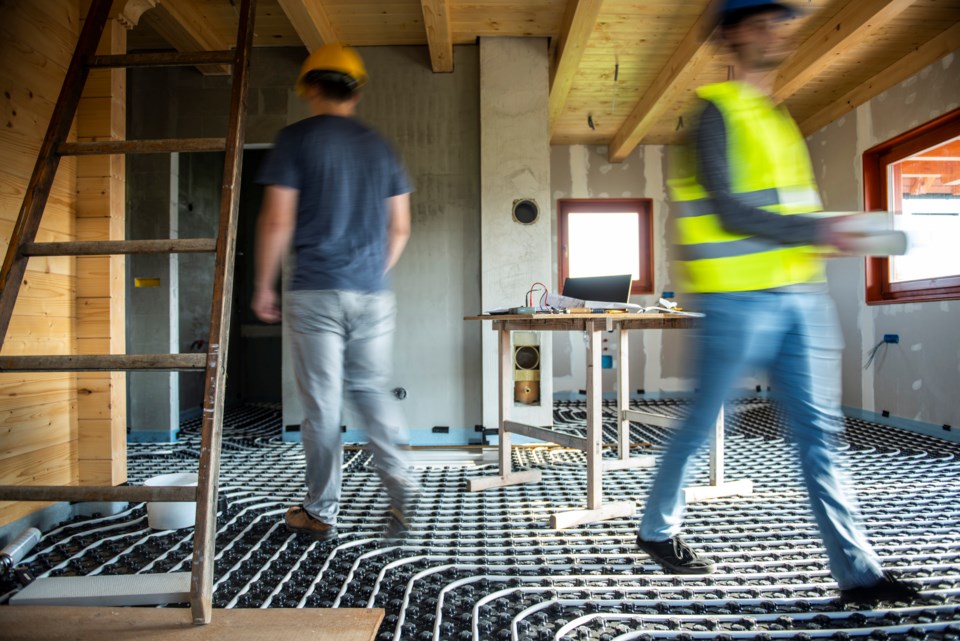As global energy prices continue to rise, people are looking for ways to save money on their heating bills. One thing people are increasingly turning to is installing underfloor heating. But do heated floors help save money?
Underfloor heating is costly to install, particularly compared to other heating solutions, but it can lead to significant savings afterward, making it worthwhile. Radiant heating also solves some of the most common problems with central floor heating systems. For instance, they distribute heat evenly, ensuring the whole room is warm rather than one side.
In addition, underfloor heating removes the need for bulky radiators, which take up space in the room. The lack of heat dissipation means you can open the windows without losing too much heat.
Heavenly Heat, a leading floor heating systems company in Toronto with many years of experience installing radiant floor heating systems, can help you understand how you can save money on your energy bills.
How to save money with radiant underfloor heating
Here are some ways to save money on your energy bills with underfloor heating.
Heat during off-peak times of the day
Energy rates are lower at certain times of the day during off-peak hours, which means you can save money on heating your house during these periods. Turn off the heat during the day, when energy usage is at its highest, and allow the energy generated during the night to keep rooms warm during the day.
Heat is gradually released, helping your rooms remain warm throughout the day.
Adjust thermostat settings
Radiant heating thermostats can usually be adjusted to suit your needs. You can time when the heating switches on and off and manually adjust the temperature if required. This means you can ensure you’re not heating your home and using energy when out of the house.
Use pre-fitted sub-flooring
Planning your underfloor heating installation is an excellent way of helping you save money. When planning your budget, allocate part for sub-flooring with existing channels. This will help installers put in the radiant heating tubing more quickly, enabling them to complete the job within minutes.
Regular sub-flooring panels will be more expensive as they require at least 24 hours for the silicone sealant to seal. There’s also a risk of the sealant loosening, which means you may have to repeat the job later.
Minimize heat loss
Radiant heating systems form the basis for understanding how to save money on heating and energy bills. Unlike conventional heating systems, underfloor heating transmits heat from the floors, allowing warmth to rise upwards. This ensures that the heat lands directly on objects and people in the room. As a result, this low-level heat concentration means that wasted heat is minimized, unlike when the heat rises to the ceiling.
Additionally, radiant systems eliminate the need for ductwork during installation, preventing heat loss through any mechanical parts.
Use zonal heating
If you’re using your bedroom, you may not want or need to be heat your kitchen or dining room at the same time. Underfloor systems allow you to heat specific rooms as you use them, resulting in less energy usage.
For example, when you’re about to go to bed, you can set the timer to warm your bedroom while turning off the heating in other parts of the house.
Think about your flooring materials
While wood flooring may have an enduring appeal, its poor conductive properties mean it doesn’t work well with radiant underfloor heating. In addition, wood expands and contracts as it warms and cools, making it more problematic for these systems.
Tile or stone contain better heat-transferring properties, as they are more durable and can withstand temperature changes without damage. They are also better at withstanding moisture.
Consider installing heated flooring over a larger area
Installing heated flooring over a bigger area of your home may not seem like a money-saving exercise. Your installation spend will be higher on materials and labor – although you may get a discount on materials due to the volume of your order, and the installation may cost you less per square footage.
However, the long-term cost-effectiveness will be better, providing a greater long-term payoff. Calculate the figures in advance to find the potential savings if you extend the heated flooring across more rooms in your home. You may be surprised at the outcome.
How much does it cost to heat a room with underfloor heating?
Underfloor heating costs depend on the system you choose, but the average cost is between $8 and $20 per square foot.
Here is some more detail on the costs of each type of underfloor heating:
Electric floor heating
Electric floor heating is one of the cheaper solutions, costing between $8 and $12 per square foot. While affordable, the wires used in electrical systems can get damaged in high-traffic areas, such as kitchens. In addition, electrical systems require a complete overhaul after damage.
To help you understand potential bill savings, the system uses around 3.66 kWh per square foot monthly.
Hydronic floor heating
Hydronic floor heating uses water pumped through tubes to warm rooms. Water is cheaper than electricity and can retain heat for longer. Yet, installation costs are significantly higher, costing approximately $20 per square foot.
Air-heated floor heating
Air-heated systems also cost around $20 per square foot and rely on warm air passing through tubes to generate heat. Air does not retain heat as well as water or electric wires, therefore it is less efficient.
Other potential issues include leakages, which are hard to detect and can lead to higher heating bills.
Final thoughts
Installing radiant underfloor heating incurs a significant upfront cost. However, it is an investment that will be recouped over time through savings on heating bills. By applying an intelligent approach to heating rooms as needed and minimizing heat loss as it rises from the ground up, underfloor heating is an excellent way to reduce the cost of warming your home over the long term.
